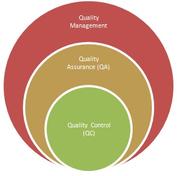Black Box vs. White Box Testing: A Detailed Comparison
Advertisement
This article explores the key differences between Black Box testing and White Box testing, two fundamental approaches to software and device testing. We’ll break down each method, highlighting their unique characteristics and when each is most appropriate.
Understanding the Basics
At a high level, Black Box testing focuses on the external behavior of the Device Under Test (DUT) or Software Under Test (SUT). Think of it like testing a car by driving it, without knowing how the engine or other internal components work. White Box testing, on the other hand, dives deep into the internal workings of the DUT/SUT, examining the code, algorithms, and structure. Imagine a mechanic inspecting the engine’s parts to ensure everything functions correctly.
Let’s delve into a point-by-point comparison:
Black Box Testing
Here are the key characteristics of Black Box testing:
- No Internal Knowledge Required: Testers focus on inputs and outputs, without needing to understand the internal code structure or logic.
- Alternative Names: It’s also known as Closed Box or Data-Driven testing.
- Methodology: Often employs a trial-and-error approach, experimenting with various inputs to see how the system responds.
- Who Performs It?: Black Box testing is conducted by a broad range of individuals, including end-users, testers, and developers.
- Time to Complete: Generally, Black Box testing takes less time to complete compared to its counterpart.
- Algorithm Testing Suitability: It’s generally not suitable for deep algorithm testing as it cannot directly access the code and logic being implemented.
White Box Testing
Here are the key characteristics of White Box testing:
- Internal Knowledge is a Must: Testers need a comprehensive understanding of the internal code, structure, and functionality.
- Alternative Names: Also referred to as Clear Box or Structural testing.
- Methodology: Relies on well-defined test cases that are designed to specifically exercise internal components.
- Who Performs It?: White Box testing is typically conducted by testers and developers who have an in-depth knowledge of the code.
- Time to Complete: It generally takes more time to complete because of the detailed analysis involved.
- Algorithm Testing Suitability: White Box testing is highly suitable for algorithm testing as it allows for a granular level of analysis and validation.
Summary
In essence, Black Box testing is like testing the “what,” while White Box testing is like testing the “how.” Both methods are vital and contribute to a well-rounded testing strategy. The choice between them (or using a combination of both) depends on factors like testing objectives, project timelines, resources, and the depth of analysis required.
Advertisement
 T&M
T&M 


